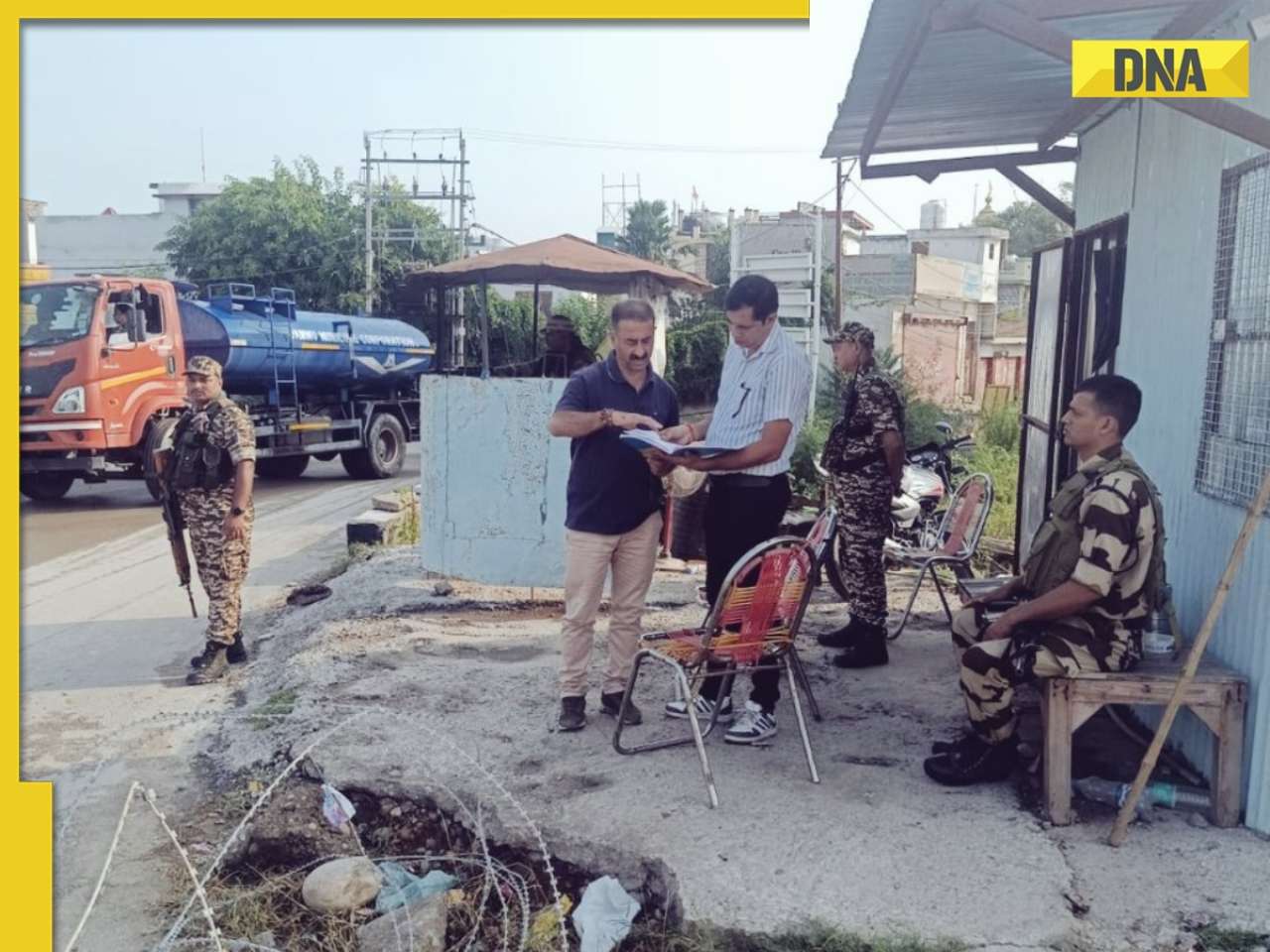The bombing of a civilian city with phosphorus bombs is a war crime and a crime against humanity, according to the Rome Convention.
Amid escalating tensions, a senior Ukrainian police officer has accused Russian forces of launching phosphorous bomb attacks in the eastern region of Lugansk. International law prohibits the use of white phosphorous shells in heavily populated civilian areas, but allows them in open spaces to be used as cover for troops.
"It's what the Nazis called a 'flaming onion' and that's what the Russcists (amalgamation of 'Russians' and 'fascists') are dropping on our towns. Indescribable suffering and fires," Oleksi Biloshytsky, head of police in Popasna wrote on Facebook. Popasna is around 100 kilometres (60 miles) west of Lugansk city.
The bombing of a civilian city with phosphorus bombs is a war crime and a crime against humanity, according to the Rome Convention. It is claimed that on Sunday Russia had used banned phosphorus munitions in an overnight attack on the town of Popasna in eastern Luhansk region.
Read | DNA Explainer: How reliant world is on Russian gas, what's the alternate option?
What is phosphorus bombs
The main reason behind white phosphorus being considered incendiary is its effect on humans.
Phosphorus is a chemical that ignites when exposed to air, burning above 800 degrees Celsius.
Similar to the napalm used in the Vietnam war, white phosphorus self-oxidizes.
When white phosphorus comes in contact with human skin, it can cause both thermal and chemical burns.
It is almost impossible to put out once it touches the skin, leading to extreme injuries and sometimes death.
It can produce several chemicals when it comes in contact with the skin, such as phosphorus pentoxide.
Phosphorus pentoxide reacts with water in the skin and produces phosphoric acid that is highly corrosive.
The burn injuries caused by white phosphorus can damage underlying tissues that delay the healing process.
White phosphorus can be systematically absorbed by the body and cause damage to the internal organs.
The particles of white phosphorus may remain in the wound and reignite when in contact with the air.
What law says about the use of phosphorus bombs?
International law prohibits use of white phosphorus shells in heavily populated areas but allows in open spaces to be used as cover for troops.
The bombing of a civilian city with phosphorus bombs is a war crime and a crime against humanity, according to the Rome Convention.
Once ignited, phosphorus in the bombs burns at temperatures above 800 degrees Celsius, as per the International Committee of the Red Cross.
When phosphorus in the bombs are ignited, it causes fires that can spread over several hundred square kilometres.
Additional Protocols to the 1977 Geneva Convention prohibited the use of white phosphorus munitions if they pose a threat to civilians.
Phosphorus bombs can be used on battlefields to make smoke screens, generate illumination, mark targets or burn bunkers and buildings.
If phosphorus munitions are used against people, they are then classed as a chemical weapon. Under international law, it is an incendiary weapon.
Russia acceded to the Chemical Weapons Convention in 1997 and so bound by international law not to use phosphorous munitions in civilian areas.
Chemical Weapons Convention clarified the use of phosphorus munitions after US forces used in the 2004 Marine-led offensive in Iraqi city of Falluja.
White phosphorus has not been categorised as an incendiary or chemical weapon by international agencies but United Nation considers it so.
![submenu-img]() How Kareena Kapoor, Hansal Mehta's The Buckingham Murders breaks moulds to emerge as a rare post-pandemic hit thriller
How Kareena Kapoor, Hansal Mehta's The Buckingham Murders breaks moulds to emerge as a rare post-pandemic hit thriller![submenu-img]() Bhool Bhulaiyaa 3 director Anees Bazmee on box office clash with Singham Again: 'Why should I talk to Ajay Devgn?'
Bhool Bhulaiyaa 3 director Anees Bazmee on box office clash with Singham Again: 'Why should I talk to Ajay Devgn?'![submenu-img]() Meet man, son of auto driver, resigned after being insulted as police constable, then cracked UPSC exam to become...
Meet man, son of auto driver, resigned after being insulted as police constable, then cracked UPSC exam to become...![submenu-img]() Congress releases manifesto for J-K polls, promises Rs 4000 to...
Congress releases manifesto for J-K polls, promises Rs 4000 to...![submenu-img]() Arjun Tendulkar shines with 9-wicket haul in dominant victory for...
Arjun Tendulkar shines with 9-wicket haul in dominant victory for...![submenu-img]() Delhi New CM: आतिशी होंगी दिल्ली की नई CM, केजरीवाल देंगे इस्तीफा
Delhi New CM: आतिशी होंगी दिल्ली की नई CM, केजरीवाल देंगे इस्तीफा ![submenu-img]() Kolkata Rape-Murder Case: ममता सरकार ने मानी डॉक्टरों की मांगें, पुलिस कमिश्नर को किया बर्खास्त, प्रदर्शन खत्म करने की अपील
Kolkata Rape-Murder Case: ममता सरकार ने मानी डॉक्टरों की मांगें, पुलिस कमिश्नर को किया बर्खास्त, प्रदर्शन खत्म करने की अपील ![submenu-img]() Ghazipur Train derail: गाजीपुर में रेलवे ट्रैक पर रखा लकड़ी का टुकड़ा इंजन में फंसा, ट्रेन डिरेल की साजिश?
Ghazipur Train derail: गाजीपुर में रेलवे ट्रैक पर रखा लकड़ी का टुकड़ा इंजन में फंसा, ट्रेन डिरेल की साजिश?![submenu-img]() Haryana Election 2024: सीएम पद के लिए BJP से कई दावेदार, क्या बिगड़ सकता है पार्टी का चुनावी समीकरण
Haryana Election 2024: सीएम पद के लिए BJP से कई दावेदार, क्या बिगड़ सकता है पार्टी का चुनावी समीकरण![submenu-img]() Narendra Modi birthday today: पीएम मोदी के 10 बड़े फैसले जिन्होंने बदल दी भारतीय राजनीति की दिशा
Narendra Modi birthday today: पीएम मोदी के 10 बड़े फैसले जिन्होंने बदल दी भारतीय राजनीति की दिशा![submenu-img]() Ford to return to India after 2 years with reopening of....
Ford to return to India after 2 years with reopening of....![submenu-img]() Maruti Suzuki launches new Swift CNG, check price, mileage, other features
Maruti Suzuki launches new Swift CNG, check price, mileage, other features![submenu-img]() ‘30 LPA, 3BHK, no in-laws’: Woman earning Rs 1.32 lakh salary lists demands for future husband, netizens say...
‘30 LPA, 3BHK, no in-laws’: Woman earning Rs 1.32 lakh salary lists demands for future husband, netizens say...![submenu-img]() In a big EV push, Centre launches Rs 10900 crore PM E-Drive scheme to replace…
In a big EV push, Centre launches Rs 10900 crore PM E-Drive scheme to replace…![submenu-img]() World’s longest car has helipad, swimming pool, mini-golf course, can seat over…; it cost…
World’s longest car has helipad, swimming pool, mini-golf course, can seat over…; it cost…![submenu-img]() Meet man, son of auto driver, resigned after being insulted as police constable, then cracked UPSC exam to become...
Meet man, son of auto driver, resigned after being insulted as police constable, then cracked UPSC exam to become...![submenu-img]() Meet woman who cracked UPSC at 22 without coaching while looking after ailing father, but then lost parents, now she...
Meet woman who cracked UPSC at 22 without coaching while looking after ailing father, but then lost parents, now she...![submenu-img]() Meet man, IIT graduate, who left Rs 1 crore salary job for UPSC, secured AIR 1 in 1st attempt, posted in...
Meet man, IIT graduate, who left Rs 1 crore salary job for UPSC, secured AIR 1 in 1st attempt, posted in...![submenu-img]() How to Crack NEET 2025 in First Attempt?
How to Crack NEET 2025 in First Attempt?![submenu-img]() SBI SCO Recruitment 2024 Notification: Sarkari Naukri for 1497 posts, check eligibility and selection process
SBI SCO Recruitment 2024 Notification: Sarkari Naukri for 1497 posts, check eligibility and selection process![submenu-img]() Kolkata Doctor Case: Protesting Doctors React After CBI Arrests Sandip Ghosh And Abhijit Mondal
Kolkata Doctor Case: Protesting Doctors React After CBI Arrests Sandip Ghosh And Abhijit Mondal![submenu-img]() Nitin Gadkari: Union Minister Nitin Gadkari Reveals He Was Offered Support For PM Post But Declined
Nitin Gadkari: Union Minister Nitin Gadkari Reveals He Was Offered Support For PM Post But Declined![submenu-img]() Kolkata Doctor Case: Junior Doctors Protest For 5th Night As Talks With CM Mamata Fail Again
Kolkata Doctor Case: Junior Doctors Protest For 5th Night As Talks With CM Mamata Fail Again![submenu-img]() Muslim Sculptor Crafts Tiny Ganesh Idols On Pencil Graphite #shorts #viralvideo #ganesh
Muslim Sculptor Crafts Tiny Ganesh Idols On Pencil Graphite #shorts #viralvideo #ganesh![submenu-img]() Jaishankar: EAM Dr. S. Jaishankar On India-China Relations & Disengagement Problems | Ladakh
Jaishankar: EAM Dr. S. Jaishankar On India-China Relations & Disengagement Problems | Ladakh![submenu-img]() Meet man, who turned Bajaj Housing Finance into Rs 137406 crore company, not from IIT, IIM, he is...
Meet man, who turned Bajaj Housing Finance into Rs 137406 crore company, not from IIT, IIM, he is...![submenu-img]() Meet woman who failed to secure a job, then built Rs 800 crore company by selling waste from home, her business is…
Meet woman who failed to secure a job, then built Rs 800 crore company by selling waste from home, her business is…![submenu-img]() Meet Mukesh Ambani's brother, 'third son' of Dhirubhai Ambani, who left his business to join Reliance, he is...
Meet Mukesh Ambani's brother, 'third son' of Dhirubhai Ambani, who left his business to join Reliance, he is...![submenu-img]() Meet man, an Indian, who is set to invest Rs 1258245000 in Israeli company to...
Meet man, an Indian, who is set to invest Rs 1258245000 in Israeli company to...![submenu-img]() This Shark Tank judge still uses Zomato coupons, says, 'I get excited about Rs 40…’
This Shark Tank judge still uses Zomato coupons, says, 'I get excited about Rs 40…’![submenu-img]() Meet 7 biggest wealth gainers of 2024, Elon Musk, Mukesh Ambani, Ratan Tata, not in the list
Meet 7 biggest wealth gainers of 2024, Elon Musk, Mukesh Ambani, Ratan Tata, not in the list![submenu-img]() Meet Lucknow's richest man with net worth of Rs 12580 crore, he is...
Meet Lucknow's richest man with net worth of Rs 12580 crore, he is...![submenu-img]() Siddharth, Aditi Rao Hydari share first photos from their traditional south Indian wedding: 'Mrs and Mr Adu-Siddhu'
Siddharth, Aditi Rao Hydari share first photos from their traditional south Indian wedding: 'Mrs and Mr Adu-Siddhu'![submenu-img]() In pics: Priyanka Chopra stuns in bikini as she takes 'perfect pause' for beach vacation with Nick Jonas, Malti Marie
In pics: Priyanka Chopra stuns in bikini as she takes 'perfect pause' for beach vacation with Nick Jonas, Malti Marie![submenu-img]() From John F Kennedy to Donald Trump: List of US politicians who were assassinated or targeted
From John F Kennedy to Donald Trump: List of US politicians who were assassinated or targeted![submenu-img]() Congress releases manifesto for J-K polls, promises Rs 4000 to...
Congress releases manifesto for J-K polls, promises Rs 4000 to...![submenu-img]() Jammu Kashmir Assembly Election 2024: Multi-tier security arrangements put up in J-K ahead of 1st phase polls
Jammu Kashmir Assembly Election 2024: Multi-tier security arrangements put up in J-K ahead of 1st phase polls![submenu-img]() Haryana Assembly Election 2024: BJP's Sirsa candidate withdraws nomination party may support...
Haryana Assembly Election 2024: BJP's Sirsa candidate withdraws nomination party may support...![submenu-img]() Sebi withdraws statement on 'unprofessional work culture' amid employee unrest, commits to...
Sebi withdraws statement on 'unprofessional work culture' amid employee unrest, commits to...![submenu-img]() Kolkata doctor rape, murder case: Protesting doctors accept Mamata Banerjee's ‘final’ talks invite on these 3 conditions
Kolkata doctor rape, murder case: Protesting doctors accept Mamata Banerjee's ‘final’ talks invite on these 3 conditions












































)
)
)
)
)
)
)
)
)
)
)
)
)
)
)





)
)
)
)
)
)